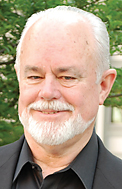 |
|||||||||||
|
GOVERNMENT AFFAIRS COMMITTEE REPORT, September/October 2012 Camp Lejeune Water Victims BY RIC DAVIDGE, CHAIR, AND GOVERNMENT AFFAIRS STAFF
“I think all Americans feel we have a moral, sacred duty toward our men and women in uniform,” President Obama said before signing the Honoring America’s Veterans and Caring for Camp Lejeune Families Act of 2012 in the Oval Office. The law covers those with conditions linked to water contamination that occurred at Camp Lejeune between 1957 and 1987. When the Senate, after a long impasse, passed the bill, Sen. Richard Burr (R-N.C.), its lead sponsor and prime mover, said in a statement: “While I wish we could have accomplished this years ago, we now have the opportunity to do the right thing for the thousands of Navy and Marine veterans and their families who were harmed during their service to our country.” The President was joined at the signing by Jerry Ensminger, a retired Marine Corps master sergeant who served at Camp Lejeune and worked on behalf of affected veterans and families. The first title of the law was named after his daughter, Janey, who died of leukemia when she was nine years old. Mike Partain attended as well. The son and grandson of Marine officers, he was born at Camp Lejeune and developed breast cancer at age thirty-nine. He is a community representative for the Agency of Toxic Substances and Disease Registry. Among the health conditions that will be covered by the new law are esophageal, lung, bladder, kidney, and breast cancers; leukemia; non-Hodgkin’s lymphoma; multiple myeloma; renal toxicity; hepatic steatosis; female infertility; miscarriage; scleroderma; and certain neurobehavioral effects. The measure may help as many as 750,000 veterans and family members who were exposed to drinking water poisoned with trichloroethylene, tetrachloroethylene, benzene, and vinyl chloride. The bill also has several provisions that will improve VA health care coverage, housing, education, and burial benefits, White House officials said. An initiative on preventing homelessness among veterans renews the VA’s authority to work with community organizations and make use of previously underutilized VA properties. “It is going to have an immediate impact,” the President said. “It is going to improve access to health care, streamline services in the VA, and it expands support for veterans who are homeless.” The law also restricts protests at military funerals by prohibiting demonstrations within 300 feet for two hours before and after services. “The graves of our veterans are hallowed ground. And, obviously, we all defend our Constitution and the First Amendment and free speech, but we also believe that when men and women die in the service of their country and are laid to rest, it should be done with the utmost honor and respect,” the President said. ASPIRE 1, NIMBY 0 We were at first dismayed and then angered when we read in The Los Angeles Times on June 26 that a VA plan for a forty-bed treatment center in San Diego for veterans from the wars in Iraq and Afghanistan suffering from post-traumatic stress disorder and traumatic brain injury had run into opposition from neighborhood groups and a nearby charter school. The opposition came for the most part from parents of students at the Old Town Academy, located across the street from the building in which the new Aspire Center would be housed in a remodeled former law school building, for which the VA allocated $30 million. The Times quoted Tom Donahue, the academy’s principal and executive director, as saying that parents were worried that the veterans could pose a threat, or at least a disruption, to the students. The school could find itself on lockdown if there was a problem at the center, he said. “We’re not anti-veteran,” said Donahue, noting that some of his students are from military families. “We just feel this is the wrong location.” Proponents say that the center will keep troubled veterans from slipping into homelessness. San Diego has more than thirty thousand veterans from Iraq and Afghanistan, more than any area in the country, according to the VA. Lined up initially against the center were the Mission Hills Town Council, which acts as an advisory group to the City Council on land-use issues, and the Old Town Chamber of Commerce. “The issue is politically tricky for the City Council, pitting two groups that council members say are a priority,” The Times wrote, “military veterans and elementary school students. One council member, Sherri Lightner, is in a tight reelection campaign; another, Carl DeMaio, is in a runoff for mayor with Rep. Bob Filner, long a favorite with veterans’ groups.” Filner is currently the Ranking Member on the House Veterans’ Affairs Committee. What is disturbing are the inflated fears of some in a community that supports our troops and veterans—until they perceive a threat, however empty, from those who have been hurt the most by their experiences in war. These shocked veterans might be dangerous to themselves, but they are hardly hazardous to children. One local commentator didn’t fault Old Town Academy for opposing the Aspire Center. Who really wants struggling veterans moving across the street? he asked. Neither were they out of bounds for stirring up public sentiment or seeking political redress. “But what they did went well beyond what was prudent, civil, or decent,” Rick Rogers wrote. “Their disrespect of veterans and their reliance on fear-mongering instead of fact-gathering undid them and painted them as little more than NIMBYs.” Some assurances were put in place, such as monitoring veterans when they are on the grounds to ensure they are not loitering in the area when they are departing or arriving at the facility. Perhaps more frightening, should Aspire Center have been rejected, was the prospect of transients loitering in an empty building, with the potential that the place would turn into a party pad like other vacant houses and buildings in the area until a complaint was filed and law enforcement got around to removing the offenders. Councilmember Todd Gloria, whose district will include the Aspire Center and Old Town Academy later this year, spoke in favor of the project, saying it would be a “great success” should it move forward. The Council then voted 7-0 in favor of approval. “This Councilmember does not believe that veterans are violent people. They are not criminals. They are not to be feared,” Gloria said. “Certainly many people talk about supporting our troops. This action today, this is what supporting our troops looks like.” The Aspire Center is scheduled to open early 2013.
|
|||||||||||
| |
|||||||||||
|
|||||||||||
8719 Colesville Road, Suite 100, Silver Spring. MD 20910 | www.vva.org | contact us |
|||||||||||









 When President Barack Obama signed into law in early August a bill enabling the Department of Veterans Affairs to provide health benefits to veterans and families diagnosed with diseases related to water contamination at Camp Lejeune, North Carolina, it culminated a more than fifteen-year struggle by families who believed something toxic at Lejeune had been behind the maladies that had taken the health—and the lives—of their loved ones.
When President Barack Obama signed into law in early August a bill enabling the Department of Veterans Affairs to provide health benefits to veterans and families diagnosed with diseases related to water contamination at Camp Lejeune, North Carolina, it culminated a more than fifteen-year struggle by families who believed something toxic at Lejeune had been behind the maladies that had taken the health—and the lives—of their loved ones.